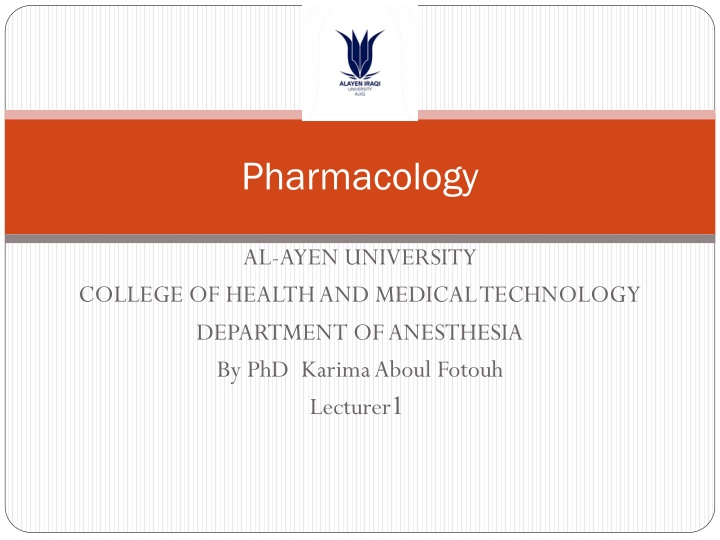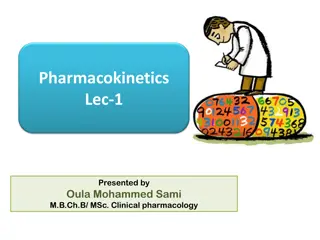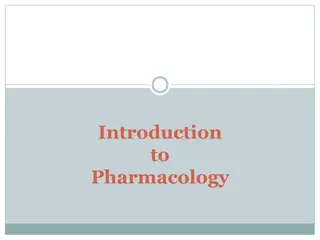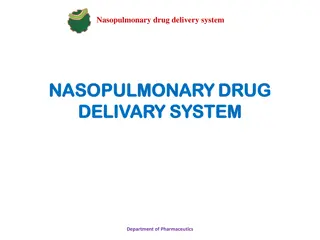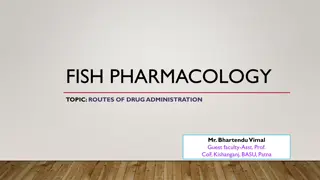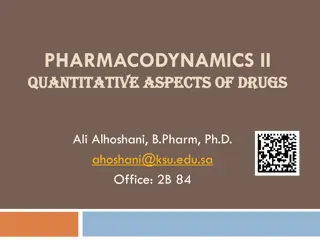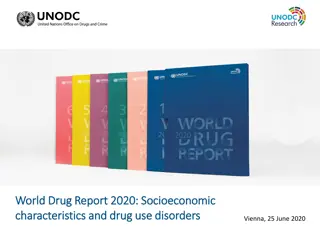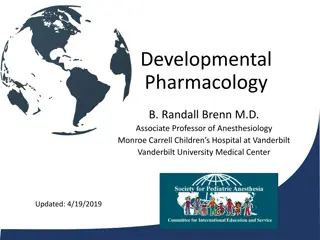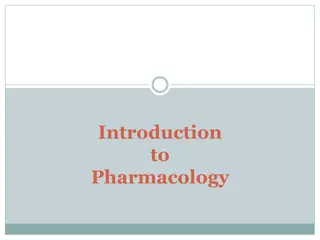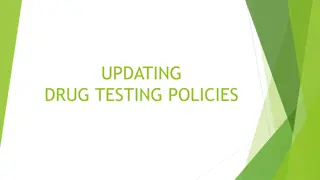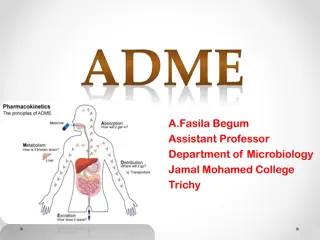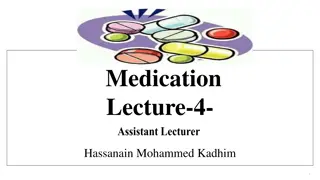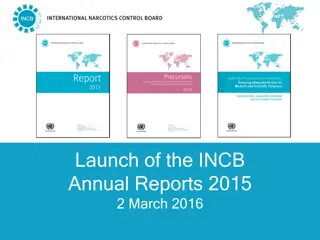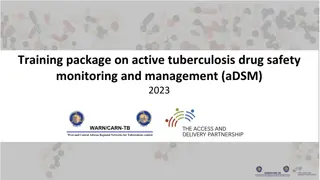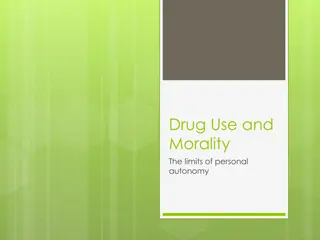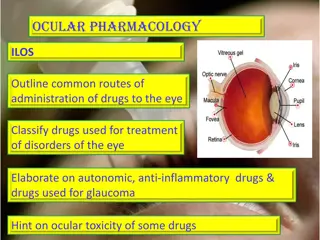Pharmacology and Drug Administration
Pharmacology is the study of substances that interact with living systems through chemical processes, affecting body processes. Drug administration routes, such as enteral routes like oral and rectal, play a crucial role in drug effectiveness based on absorption, distribution, and metabolism, impacting their systemic or local effects.
Download Presentation

Please find below an Image/Link to download the presentation.
The content on the website is provided AS IS for your information and personal use only. It may not be sold, licensed, or shared on other websites without obtaining consent from the author.If you encounter any issues during the download, it is possible that the publisher has removed the file from their server.
You are allowed to download the files provided on this website for personal or commercial use, subject to the condition that they are used lawfully. All files are the property of their respective owners.
The content on the website is provided AS IS for your information and personal use only. It may not be sold, licensed, or shared on other websites without obtaining consent from the author.
E N D
Presentation Transcript
Pharmacology AL-AYEN UNIVERSITY COLLEGE OF HEALTH AND MEDICAL TECHNOLOGY DEPARTMENT OF ANESTHESIA By PhD Karima Aboul Fotouh Lecturer1
Pharmacology can be defined as the study of substances that interact with living systems through chemical processes, especially by binding to regulatory molecules and activating or inhibiting normal body processes. Drug may be defined as any substance that brings about a change in biologic function through its chemical actions.
Selection of route of drug administration depends on: the nature of the agent being administered the purpose of the administration. Effect Of Administered Drug: 1-Systemic (General): If drug is absorbed and distributed 2-Local (Topical): If drug is not absorbed nor distributed
Enteral Route 1-Sublingual Absorbed directly Systemic circulation Good Bioavailability. 2-Oral Stomach & Intestine pH changes & enzymes Portal circulation Liver metabolism Systemic circulation Most variable Bioavailability. 3-Rectal (Suppository) a-Upper rectum Portal circulation Liver metabolism Systemic circulation b-Lower rectum Systemic circulation
1) Oral Route The most common method of drug administration Advantages Advantages Safe. Economic . Convenient . Disadvantages Disadvantages Some drugs are destroyed by acid e.g. insulin, penicillin Some drugs are inactivated in the liver before it reaches the general circulation (first pass metabolism) e.g. nitroglycerine (anti- anginal) Some drugs form complex with food e.g. tetracycline and milk Not suitable for emergency cases
Sublingual administration Drugs should be absorbed, stable, palatable and effective in small dose e.g. nitroglycerine Advantages Advantages Disadvantages Disadvantages Not suitable for irritant drugs Rapid absorption (quick effect) It avoid first pass effect It avoid complexation with food
Rectal route The rectal route is used for systemic and local effect e.g. in hemorrhoids . The drug is given in the form of suppository or enema Advantages Advantages Can be used in unconscious patients or uncooperative patient. Can be used in case of vomiting and when the drug is irritant to the stomach e.g. indomethacin treat rheumatic pain Usuful in large volume drugs. Escape gut & hepatic first pass effects. Disadvantages Disadvantages Rectal inflammation may occur with repeated use Rectal absorption is often incomplete
Parenteral route P.O.C INTRAVENOUS( IV ) *Suitable for irritant drugs *Suitable for emergency cases *100% bioavailability *Suitable for large volume *Avoid first pass effect *Anaphylactic shock *Not suitable for oily solutions or insoluble substances *Local venous thrombosis INTRAMUSCULAR( IM) *Suitable for oily solutions (preparations) & aqueous *Oily solutions can give a depot release SUBCUTANEOUS(SC) Can be used for self administartion ADV. *Not suitable for self administration *It is not suitable for large volume *Painful Not suitable for large volume DISADV
Subcutaneous (S.C.) Used for sustained release of the drug e.g. insulin suspension Drugs should be: a- Non-irritant b- Aqueous Solution or fine suspension. c- If irritant or oily Inflammation Absorption can by Enhanced by: a- Use a solution c- Application of heat b- Massage of injection area d- Add hyaluronidase enzyme Absorption can be Slowed by: a- Use a suspension b- Application of cold c- Add adrenaline (V.C.) to local anesthetics d- Add gelatin to heparin
Other routes Intra-thecal Injection of the drug into spinal cord in case of spinal anesthesia Intra-arterial e.g. anti- cancer drugs for the treatment of localized tumor Intra-articular Hydrocortisone is injected into joints in rheumatoid arthritis Intracardiac Bone marrow injections
Miscellaneous routes 1- Inhalation Advantage its effective for patient with bronchial asthma it is used for gases e.g. nitrous oxide it provide rapid absorption Disadvantage Need special apparatus Accuracy of the dose
2- Intranasal route Calcitonin hormone is used in the treatment of osteoporosis as nasal spray 3-Transdermal It involves application of drugs to the skin usually via (through) a transdermal patch e.g. nitroglycerin patch used in angina 4-Topical administration Atropine is applied directly in eyes to dilated to pupil
